Today's post is made of the text I'm about to write, these few words I already wrote, and some relatively old photographs taken on the 29th of June this year.
The plants, insects and just one spider shown here were found in the area around the town called Zminj, forty or fifty kilometers from where I live. In this opening shot, you can see an elegant small cockroach enjoying the fruits of the Lonicera implexa plant.
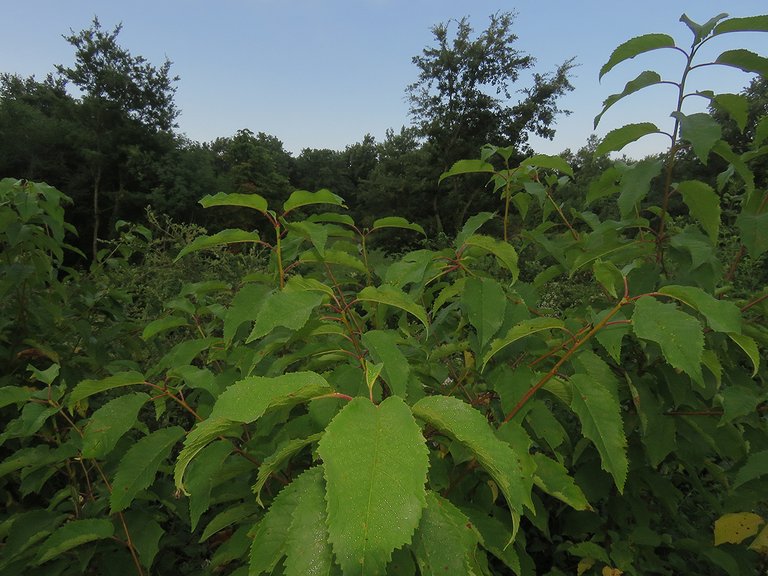
I was walking along the edge of the forest, busy exploring the shrubs and small trees that grow there when I came across the cockroach at breakfast.
It was early in the morning, so the usually fast and shy insect was very quiet and didn't bother my presence. Furthermore, I have never before seen this particular species feeding on anything, so I took plenty of photographs because who knows when an opportunity like this will show again.
But that didn't happen immediately upon my arrival. I was there for almost an hour and I took some other photographs, so now ...
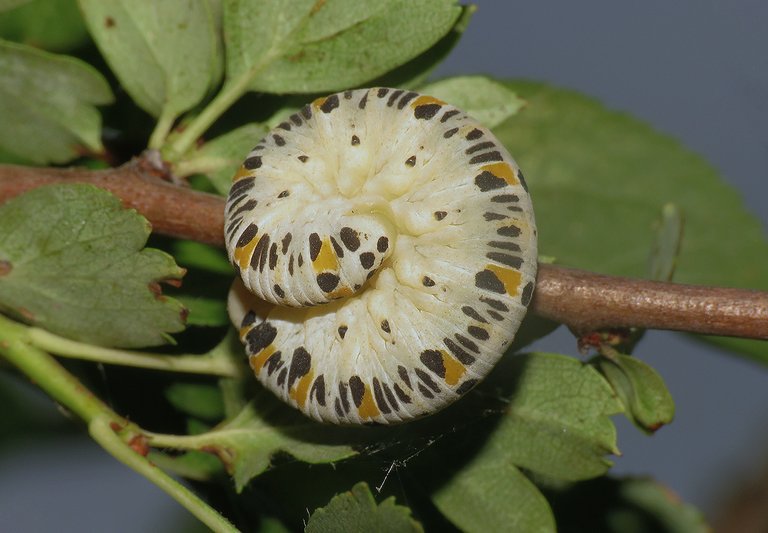
... is time to start from the beginning. Because sometimes the chronological order helps bring some semblance of structure to the post that is basically just a collection of species and moments without a solid thematic connection. The first insect I encountered is a larva. It was resting in a defensive pose that made it look like a lovely little button. Or something like that.
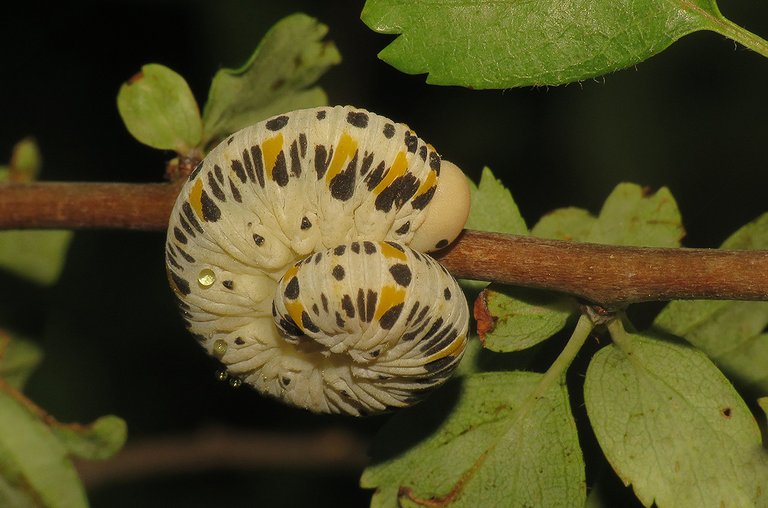
Soon I found another larva of the same kind. This time I was able to see its head. A few tiny droplets added a nice decoration to the scene. These are the larvae of the Cimbex quadrimaculatus sawfly. Sawflies are insects of the suborder Symphyta within the order Hymenoptera that besides them, includes, also ants, bees, and wasps. When it comes to their appearance, I can't show you any photographs here because I haven't found any adult sawflies along the edge of the forest, but I can tell you that they resemble the wasps. The adults of this species mimic the European hornets (Vespa crabro) with their colors and markings but are considerably smaller, and just like all the other sawflies, they don't sting. The larvae feed on various trees and shrubs, including the common hawthorn (Crataegus monogyna) on which the larvae shown in the post were found and photographed.
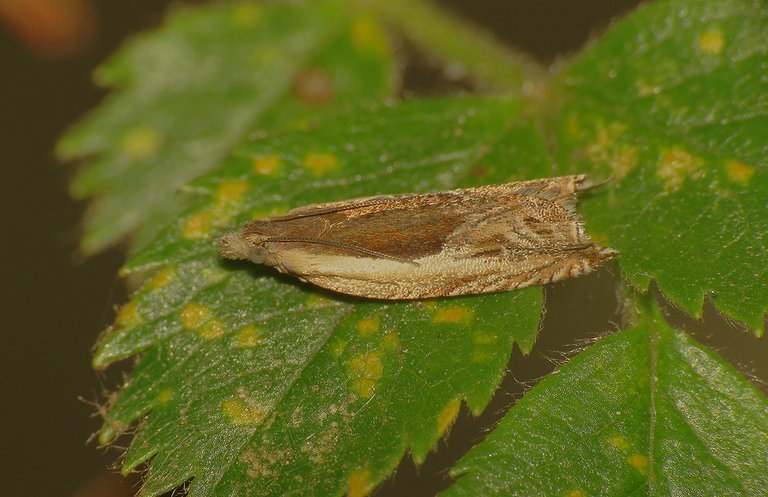
This small moth from the Tortricidae family, the Ancylis apicella, was resting on the nearby shoots of the Carpinus orientalis tree.
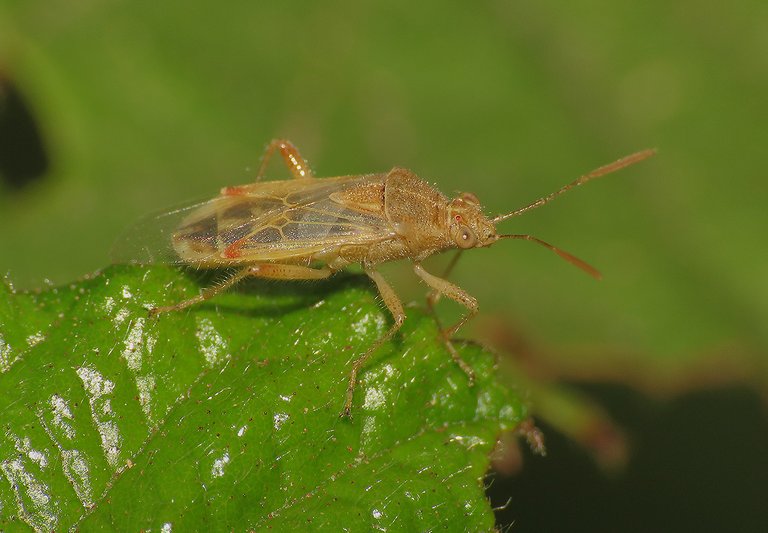
Soon, and not far from there, I found this bug from the Rhopalidae family. The name of the species is Liorhyssus hyalinus. I don't remember on which plant this insect was photographed and from the fragment of the leaf shown in the photograph is hard to recognize the species. It could be a blackberry shrub.
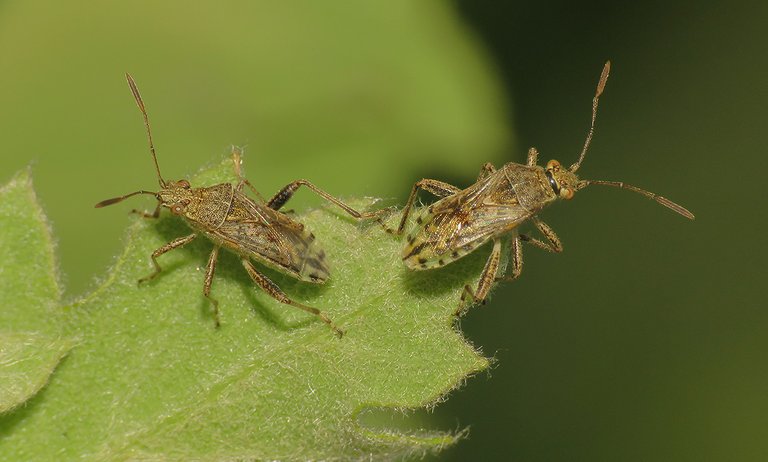
These two bugs also belong to the Rhopalidae family, as you probably immediately guessed, even before reading this sentence. They are quite similar to the previous species. Stictopleurus punctatonervosus is the name of this Rhopalidae species. In this case, the bugs were photographed on the shoots of the small oak tree, and they were found almost an hour later, which means that I had to disrupt the chronological order again, in order to put these two similar and related species next to each other.
This is the Polydrusus formosus. A small weevil from the Curculionidae family. Larvae feed underground on juicy roots of various herbaceous plants, while the adults get the nutrients from the leaves of various shrubs and trees, including the Quercus species that abound in the forests around Zminj. The light was pretty low early in the morning so the above photograph was taken with the flash of the camera on. You can take a good look at the beetle's anatomy, especially if you enlarge the picture by clicking on it, but ...
... but the beautiful iridescence of its exoskeleton can be admired only in the subtle ambient light, so I patiently, after quite a few failed attempts, took a couple of shots with longer exposure.
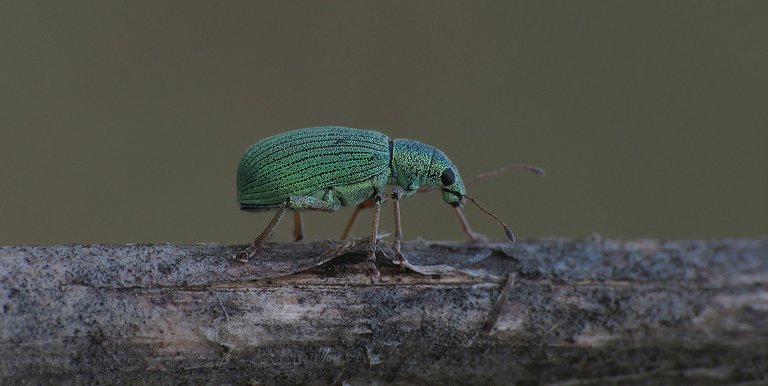
Although the weevil appears green, the base color of its body, except the legs and antennae, is black. The iridescence comes from the minuscule emerald scales. In the following photograph ...
... you can take a good look at the interesting plant on which the Polydrusus formosus was photographed. This is the dried-out Datura stramonium.
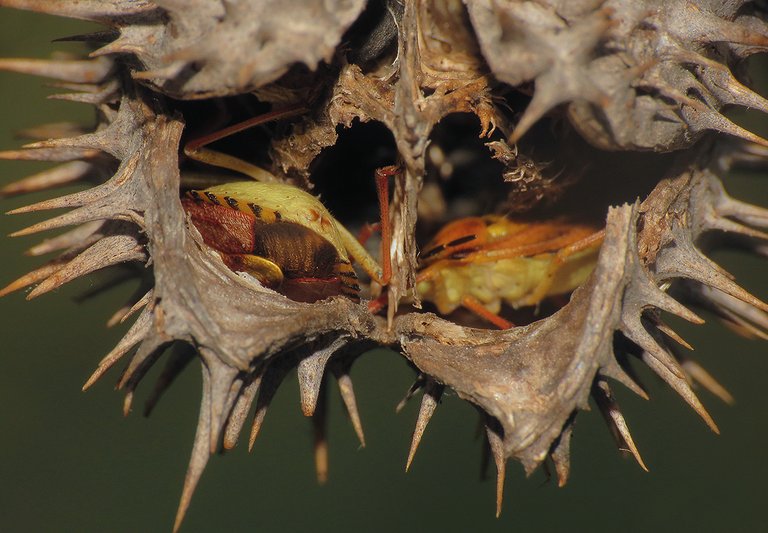
When I started exploring the details of the plant through the macro lens, I noticed something colorful hidden in the thorny seed pods ...
... and soon it was clear that I found some shield bugs.
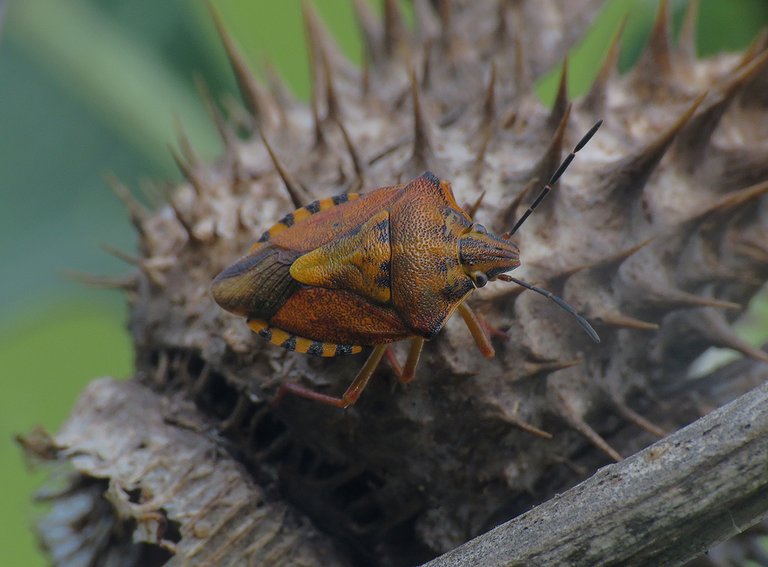
A bit later, some of those shield bugs went out in the open.
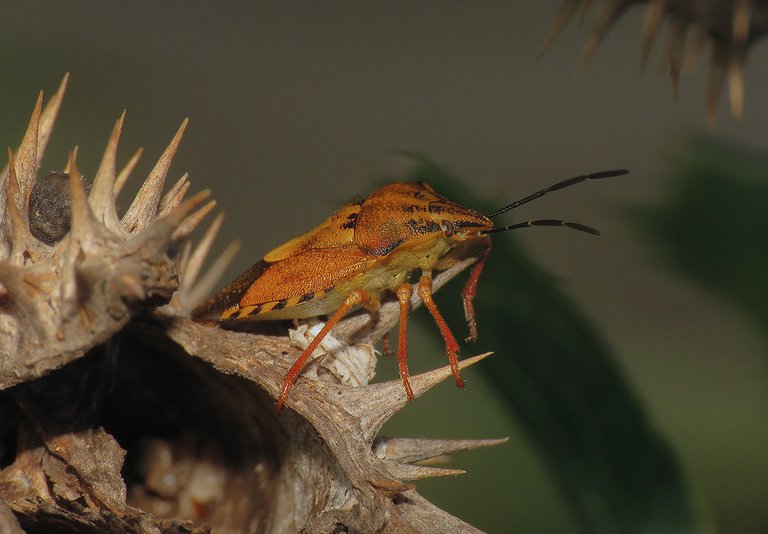
Carpocoris purpureipennis from the Pentatomidae family it's a bug that feeds on the juices of various herbaceous plants and their seeds.
In this case, some of the black Datura stramonium seeds haven't been dispersed yet ...
... so the thorny pods of the seemingly useless, desiccated remains of a once green and juicy plant were still providing both food and shelter.
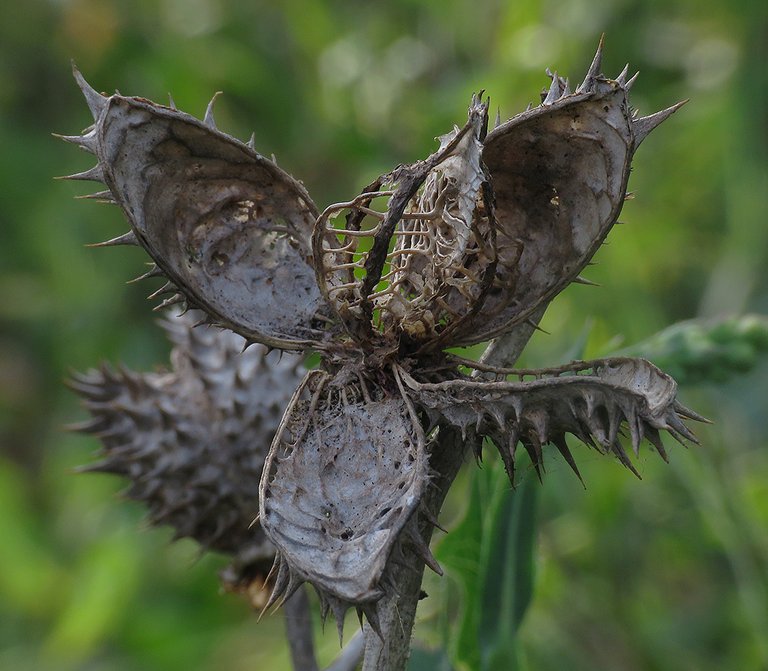
Here you can see a completely opened pod with no seed in it.
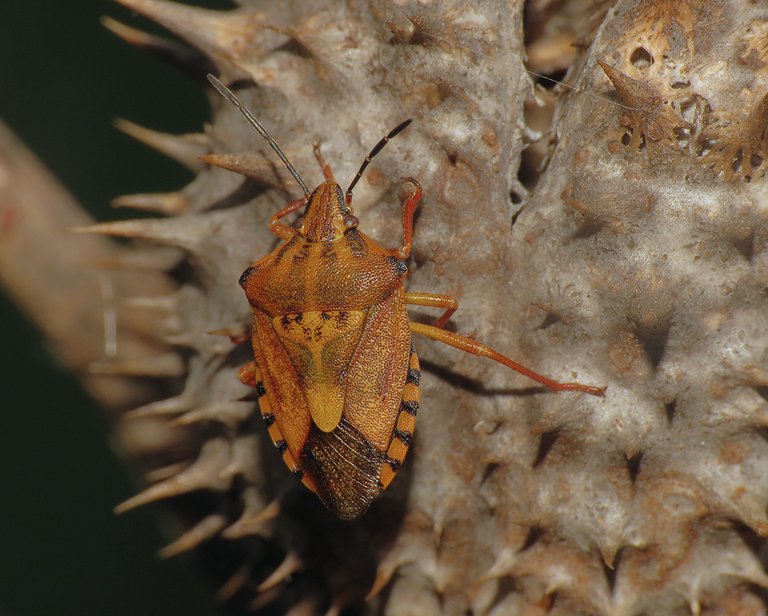
I encounter these shield bugs often and in various habitats from the coastal meadows to the inland woods, and I photographed them many, many times before ...
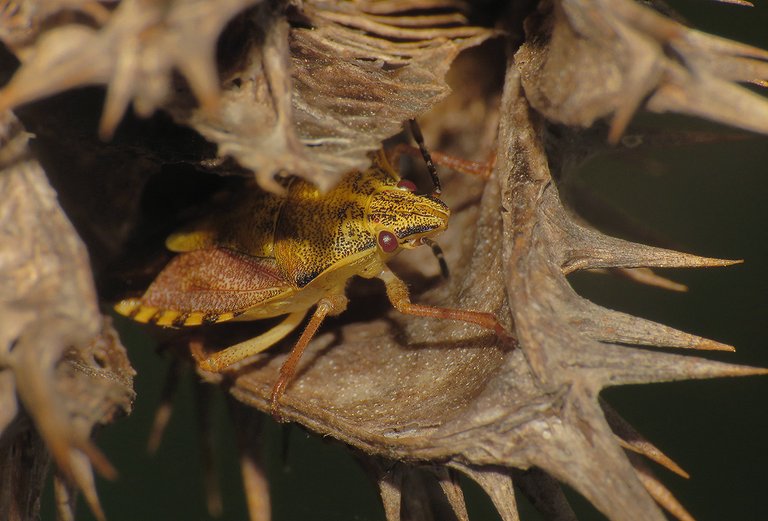
... but this shooting was definitively special and provided plenty of fun. Exploring the seed pods was exciting and trying to get a good photograph of the hidden bugs was a nice challenge.
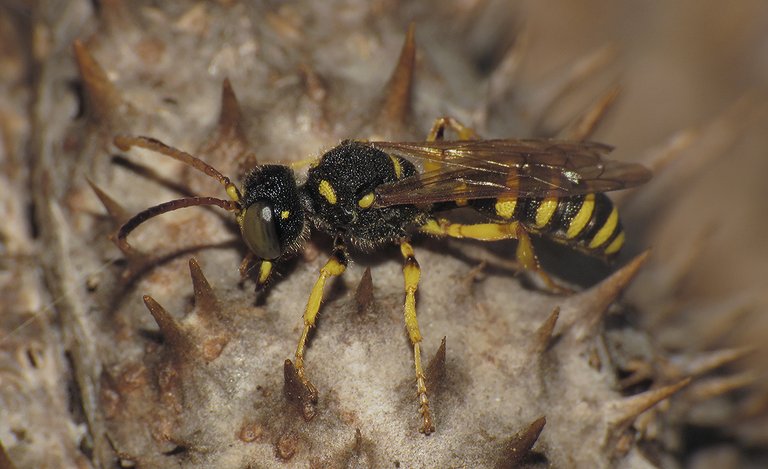
At one point a wasp landed on one of those pods.
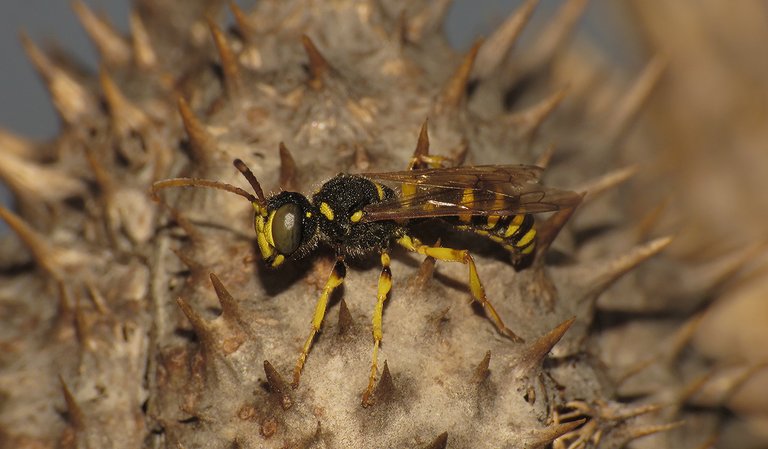
I can't tell you the name of the species but it looks like something from the genus Ectemnius or the genus Cerceris of the Crabronidae family.
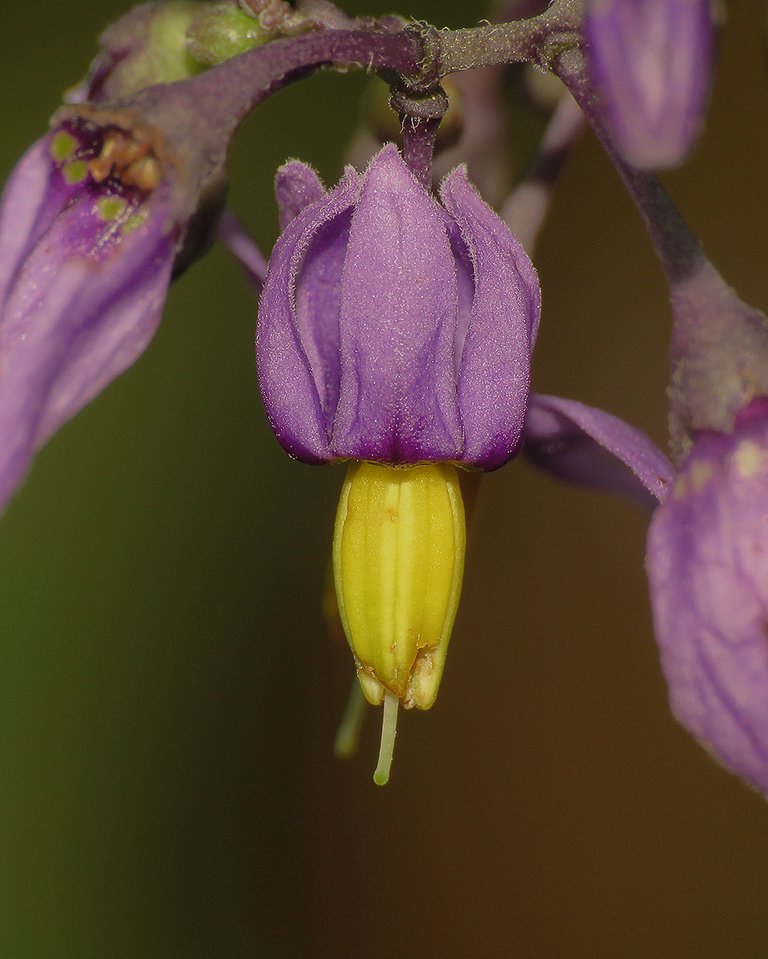
When I left the thorny seed pods of the Datura stramonium, just a couple of meters further I stopped by these small but beautiful flowers ...
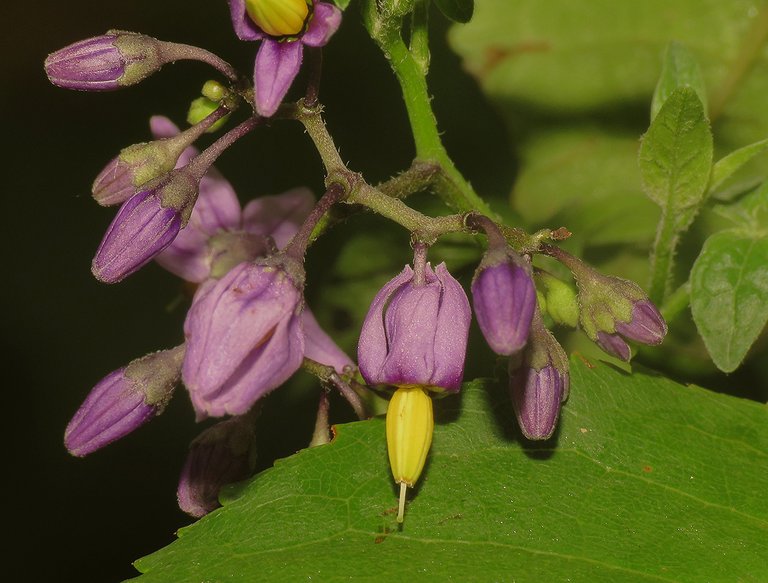
... of the Solanum dulcamara plant, and then ...
... on the nearby Lonicera implexa, I found the cockroach that started this post.
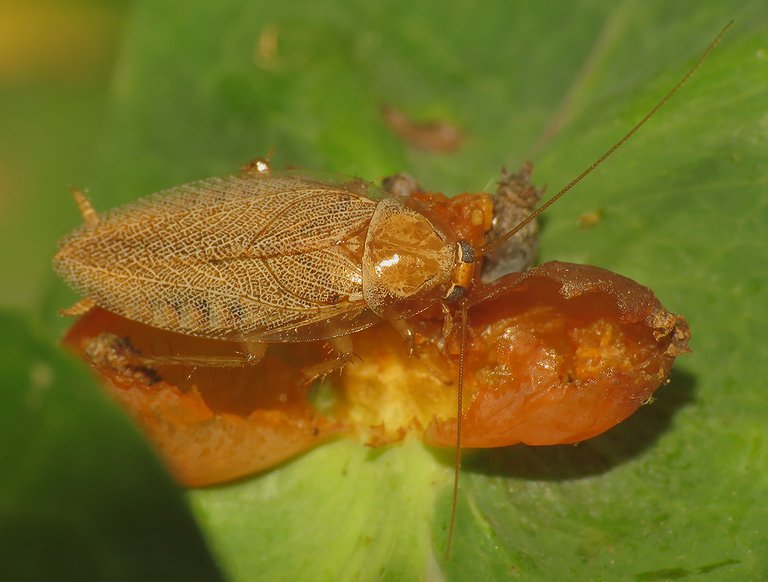
The name of the species is Ectobius vittiventris. The family is Ectobiidae. These small cockroaches with beautifully veined wings feed on all kinds of decomposing plant material, including the not-so-appetizing leaf litter, but it seems that the juicy rotting fruits are their favorite meal.
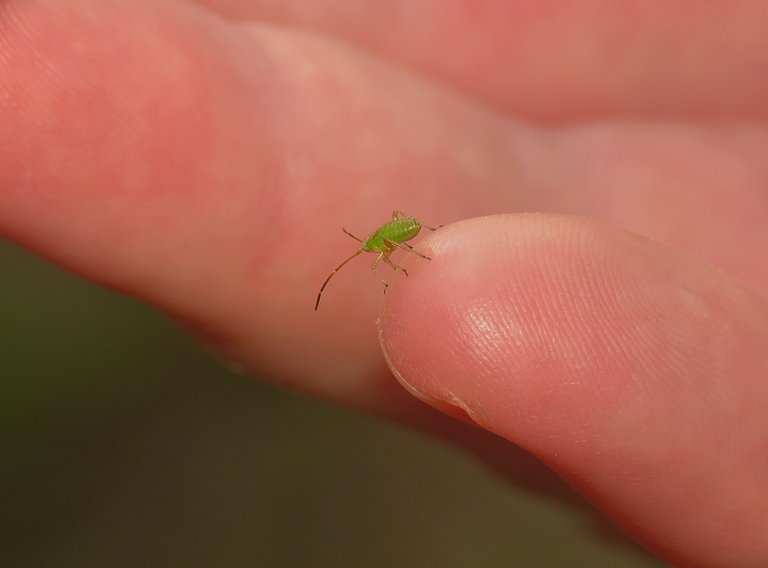
A friend was also there with me, and at one point, a small wingless nymph of some bug from the Miridae family somehow ended up on her hand. It probably fell from some shrub or the lower branches of some tree.
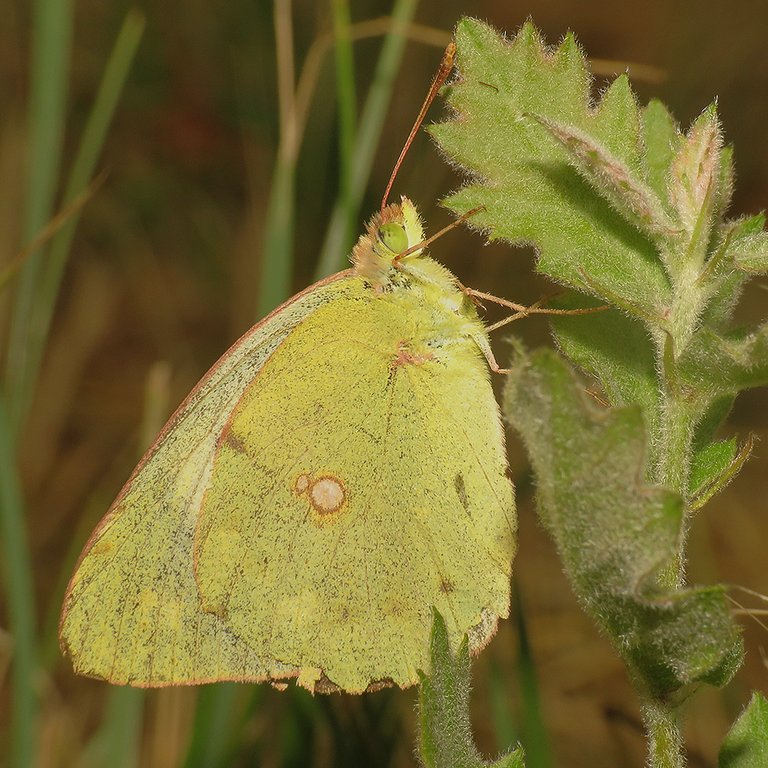
On the herbaceous vegetation of the meadow, I found this butterfly from the Pieridae family. Colias alfacariensis is the name of the species.
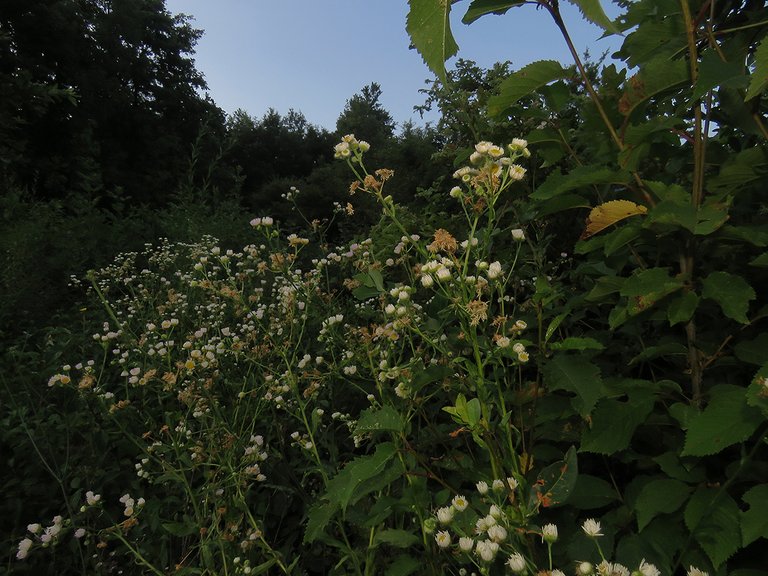
While passing by a group of pretty tall Erigeron strigosus plants in bloom ...
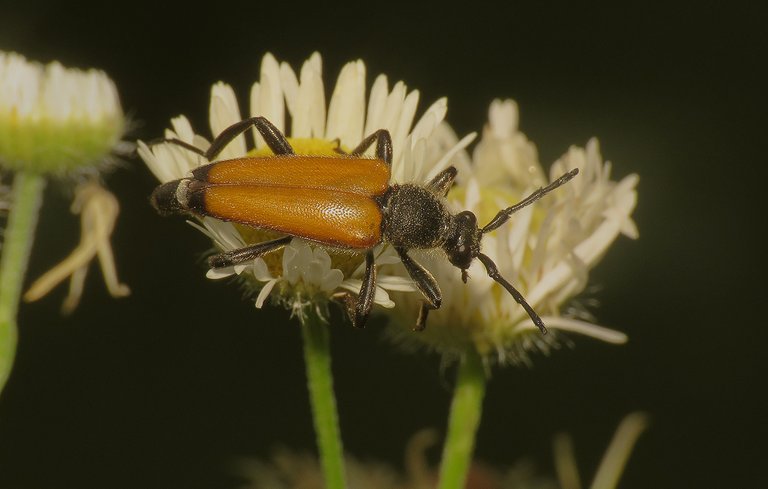
... I stopped to photograph the Paracorymbia maculicornis, a beetle from the Cerambycidae family. Cerambycidae are commonly known as longhorn beetles, and their horn-like antennae are indeed very long and iconic. Paracorymbia maculicornis as a species isn't an exception, but the beetle shown in this photograph, due to some accident or an encounter with some predator that shortened its antennae, ended up being an exception.
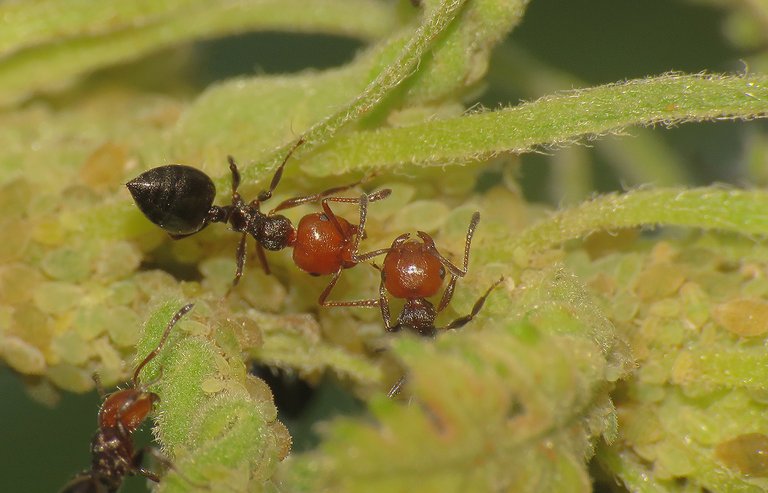
A bit later I spent some time observing the Crematogaster scutellaris ants ...
... on one of the fresh young shoots that grew from an old oak stump surrounded by various shrubs.
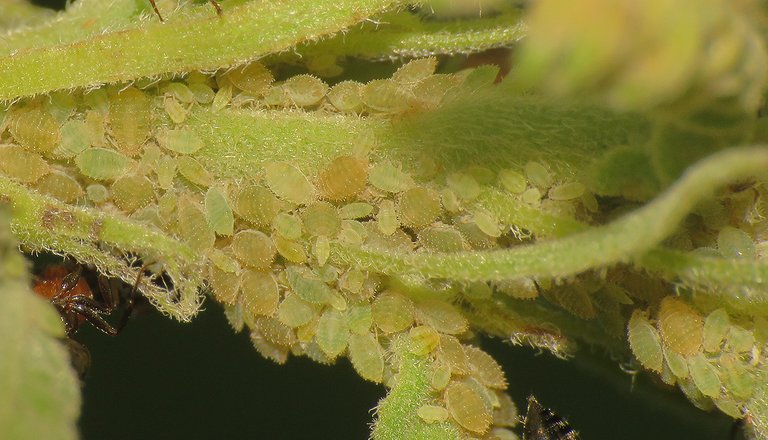
The Thelaxes suberi aphids were feeding on the top of the soft, juicy shoot ...
... and the ants were guarding them like a herd of minuscule sheep to collect the reward in form of nutrient droplets of honeydew.
In this photograph, you can see two Melanargia galathea butterflies.
They were photographed on the blackberry shrub. At this point, I was very near to my car parked by the side of the road.
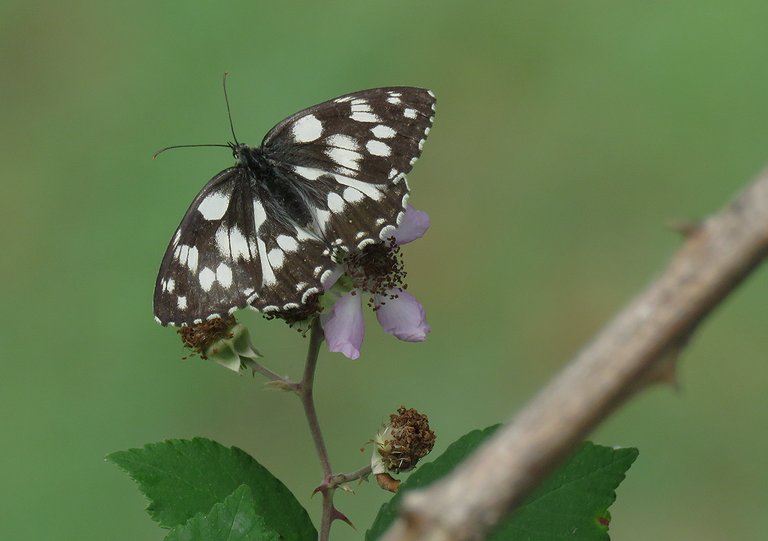
Not far from there I photographed another butterfly of the same kind, and then ...
... a moth landed on the nearby flower of the same shrub.
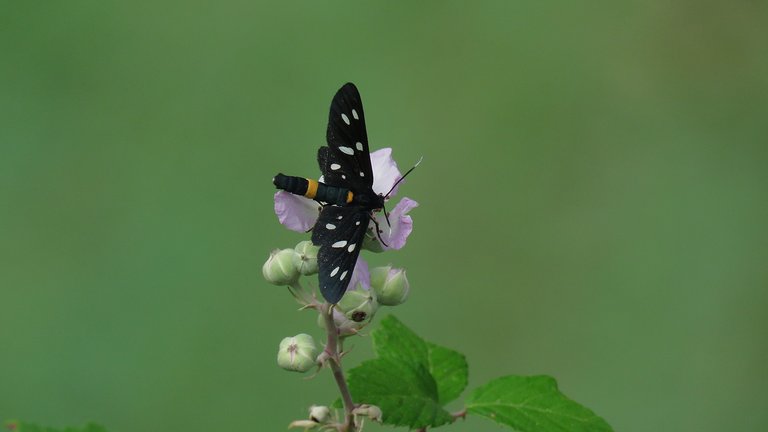
This is the Amata phegea, a diurnal moth from the Erebidae family.
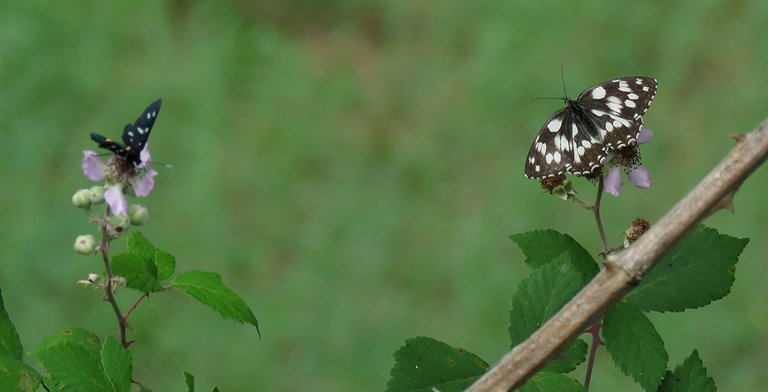
It was great to have a moth and a butterfly posing relatively near each other ...
... so I took a series of almost identical photographs in which the butterfly is motionless while the moth is moving around the flower and feeding on nectar.
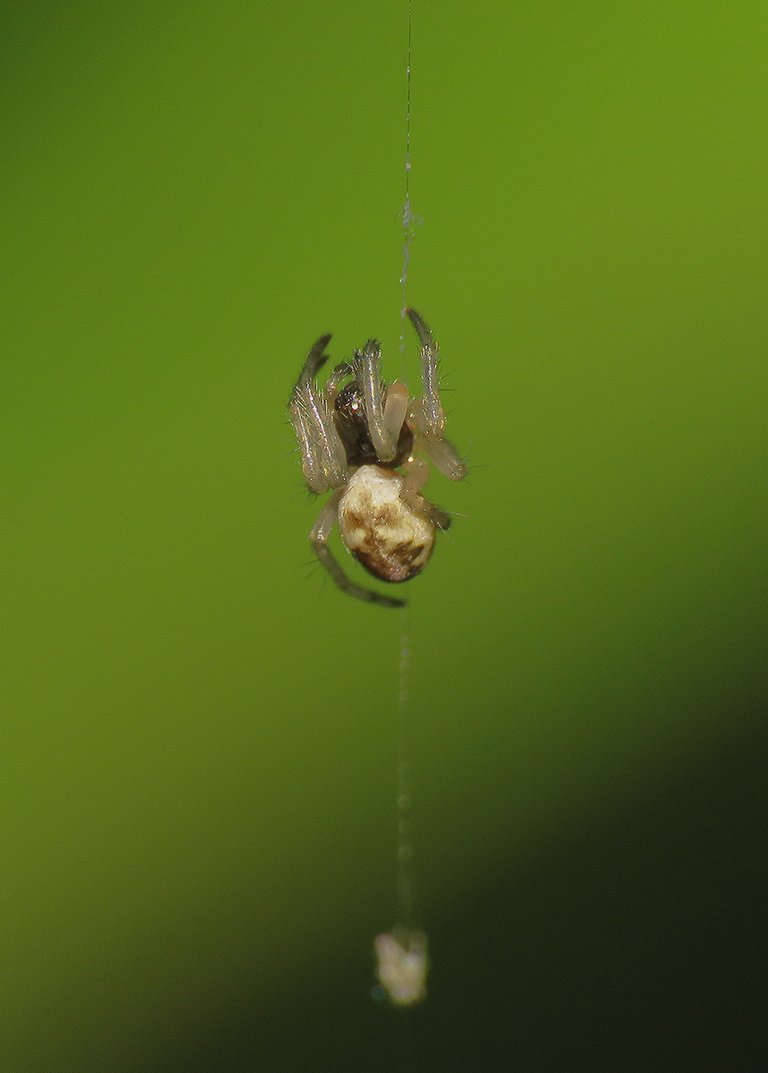
Some minutes later, while I was photographing this small spider ...
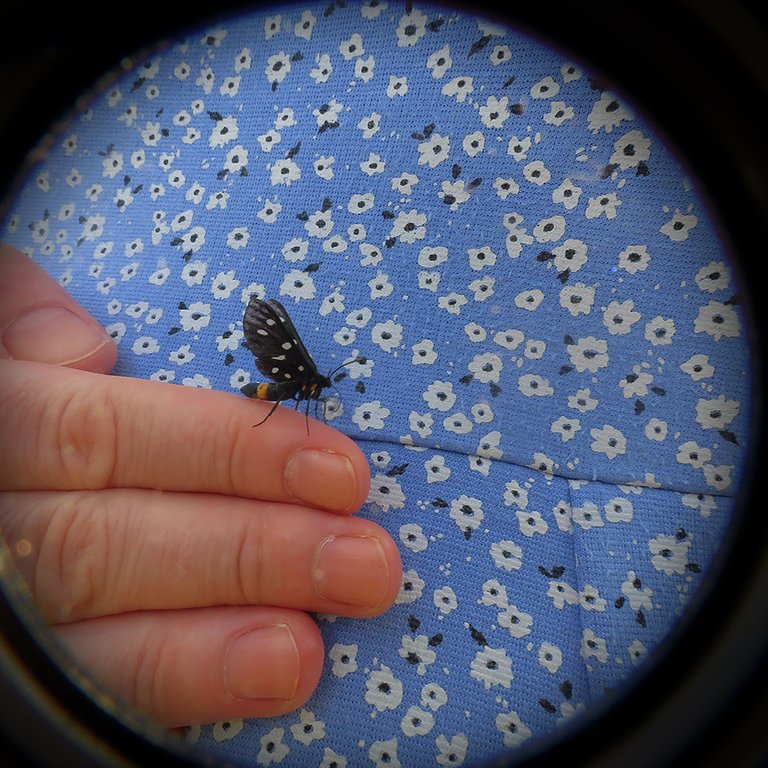
... another Amata phegea moth landed on my friend's finger.
I'm not sure about the species but the genus is definitively Cyclosa which means that the family is Araneidae.
It could be the Cyclosa conica. Maybe a juvenile Cyclosa conica, because the abdomen is considerably different in adults of that species as far as I know. In some Araneidae, there is plenty of difference between juveniles and adults, and adults can also come in quite a few versions with different colors and markings, which can make the identification confusing.
The shape of the spider helped me fail in determining the species, but the shape of the web led me directly to the right genus. Cyclosa spiders are commonly known as trashline orb weavers. They string together the dead insects and fragments of other debris and then hang those things near the center of their webs. The debris probably serves to hide and camouflage the spider. Unlike many other orb weavers that are clearly displayed on their webs, spiders from the genus Cyclosa are well hidden in plain sight.
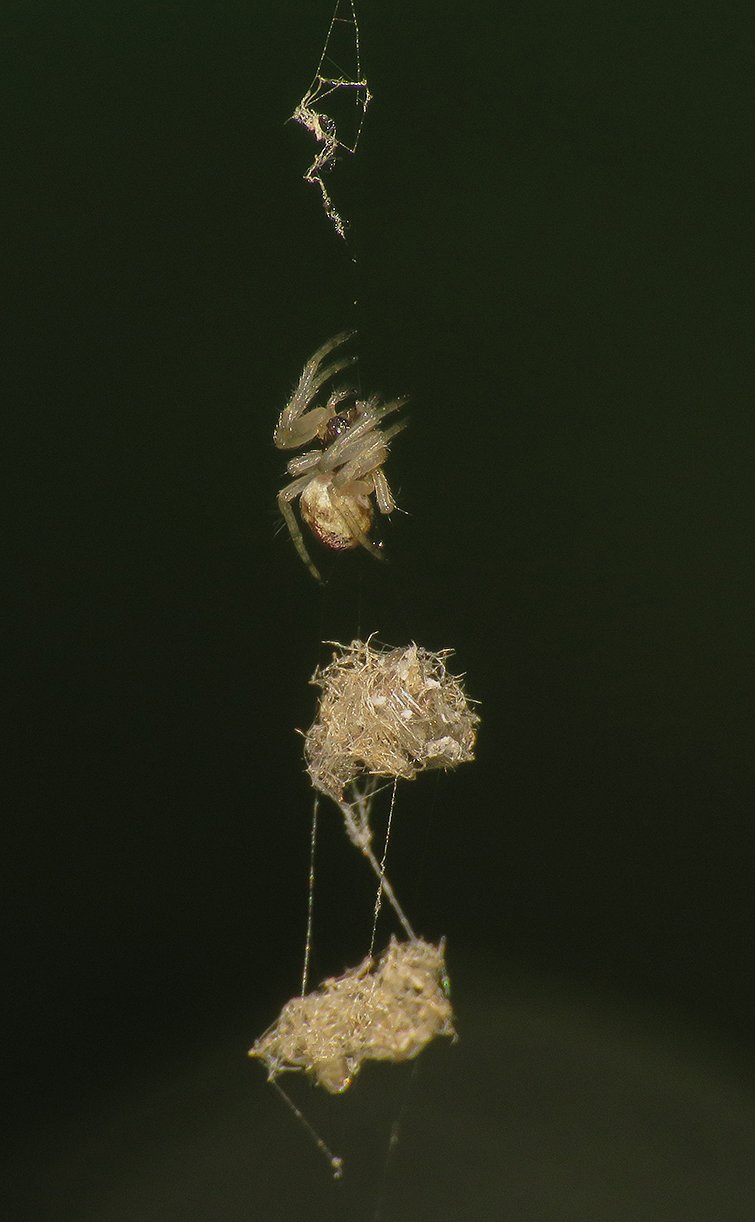
Some sources I found on the Internet mention that the hanging debris may also be there to lure insects. Or at least, some insects. This fascinating spider was the last species I photographed back then on the 29th of June 2022.
On the way back, I stopped about twenty kilometers from home, near the center of Vodnjan, another small town along the road, to let the train pass.
The following links will take you to the sites with more information about some of the protagonists of this post. I found some stuff about them there.
https://uk.inaturalist.org/taxa/467029-Cimbex-quadrimaculatus
https://www.norfolkmoths.co.uk/micros.php?bf=11290
https://bugguide.net/node/view/13887
https://www.britishbugs.org.uk/heteroptera/Rhopalidae/s_punctatonervosus.html
https://en.wikipedia.org/wiki/Polydrusus_formosus
https://en.wikipedia.org/wiki/Datura_stramonium
https://en.wikipedia.org/wiki/Carpocoris_purpureipennis
https://en.wikipedia.org/wiki/Ectemnius
https://en.wikipedia.org/wiki/Cerceris
https://en.wikipedia.org/wiki/Solanum_dulcamara
https://en.wikipedia.org/wiki/Ectobius_vittiventris
https://en.wikipedia.org/wiki/Colias_alfacariensis
https://en.wikipedia.org/wiki/Erigeron_strigosus
https://en.wikipedia.org/wiki/Paracorymbia_maculicornis
https://en.wikipedia.org/wiki/Crematogaster_scutellaris
https://influentialpoints.com/Gallery/Thelaxes_suberi_southern_oak_thelaxid.htm
https://en.wikipedia.org/wiki/Melanargia_galathea
https://en.wikipedia.org/wiki/Nine-spotted_moth
https://en.wikipedia.org/wiki/Cyclosa
https://en.wikipedia.org/wiki/Cyclosa_conica
AND THAT'S IT. AS ALWAYS IN THESE POSTS ON HIVE, THE PHOTOGRAPHS ARE MY WORK - THE END.

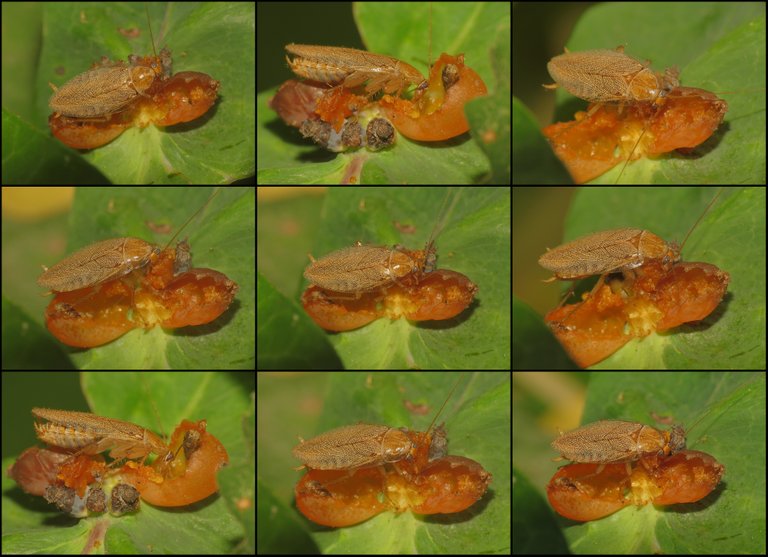
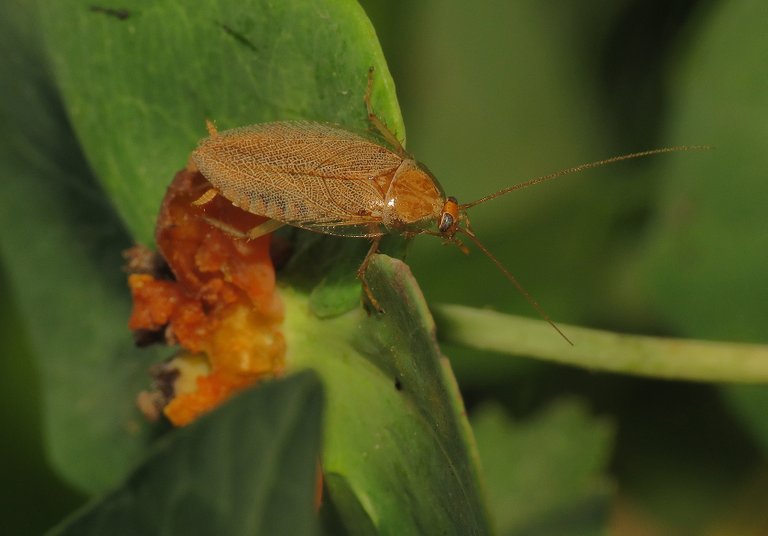
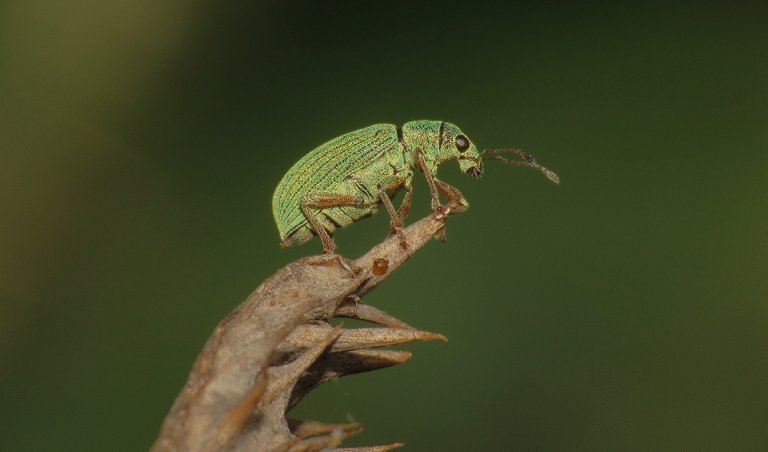
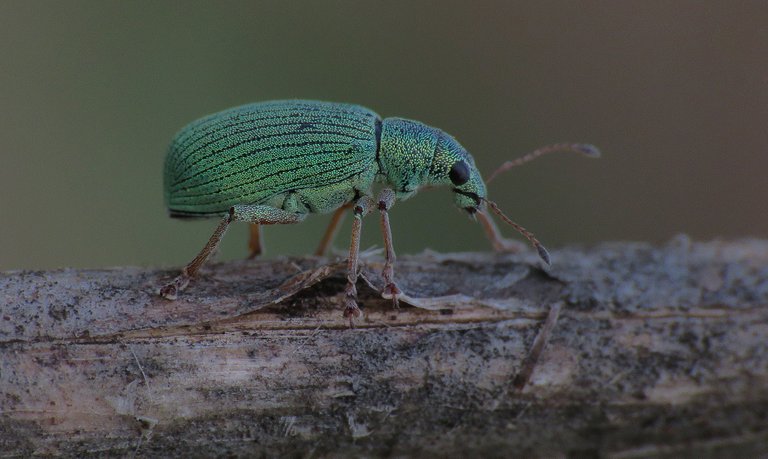
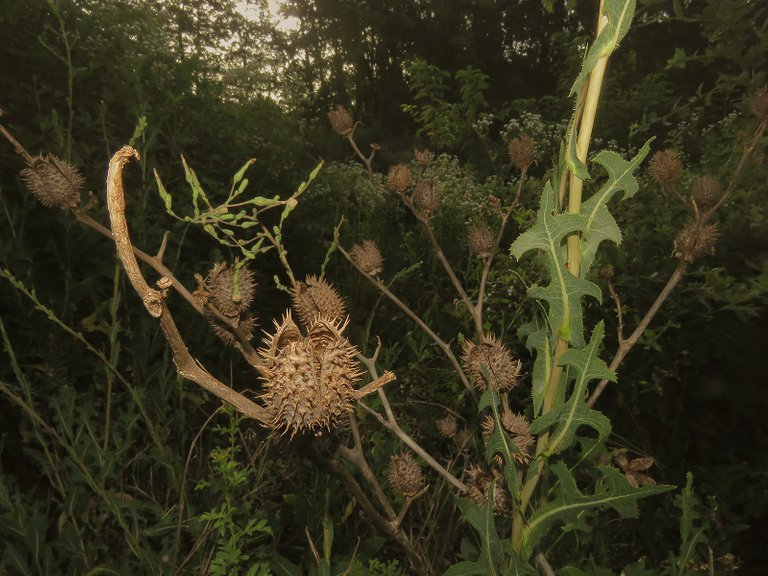
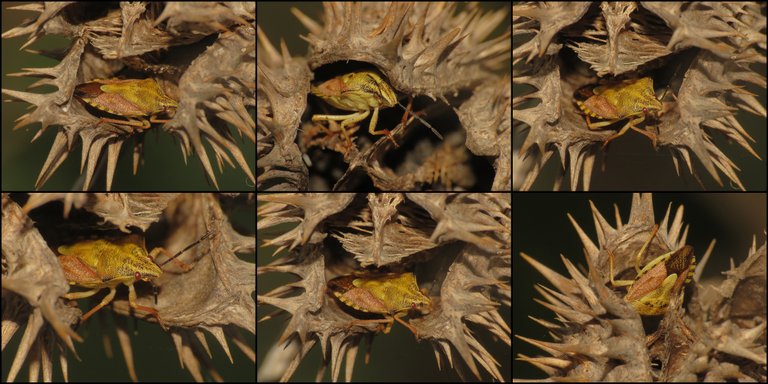
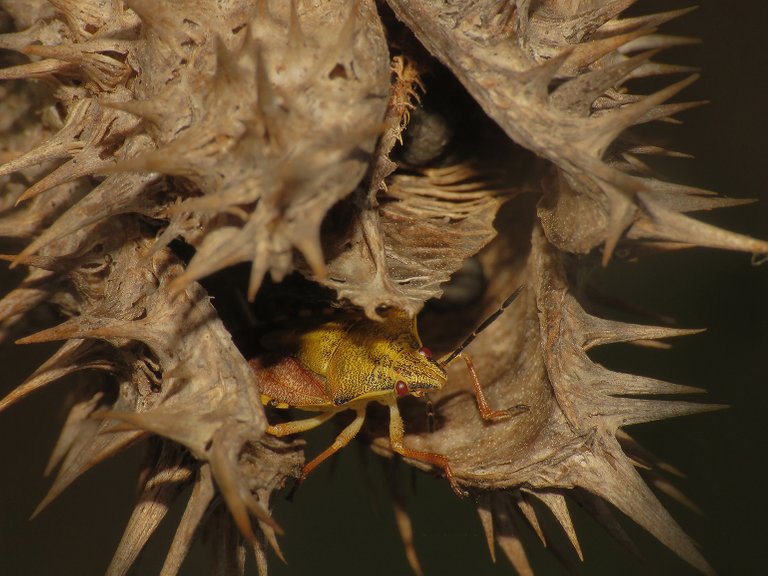

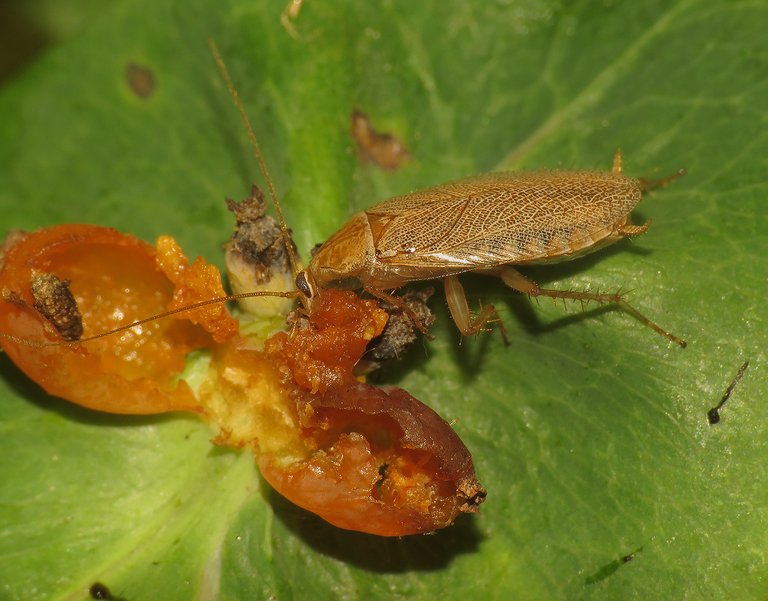
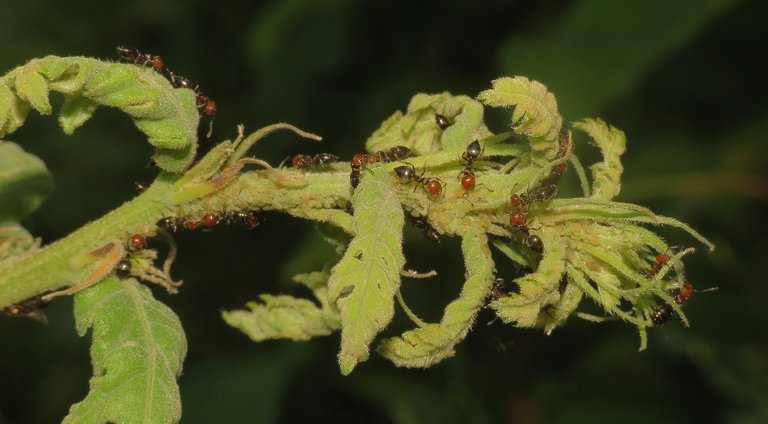
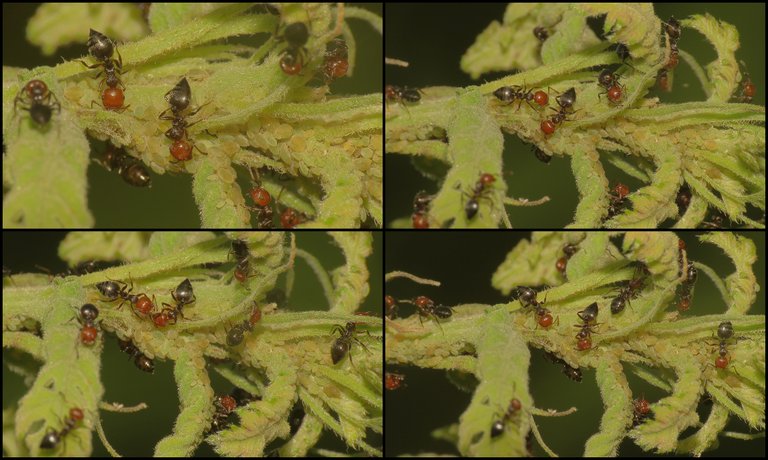
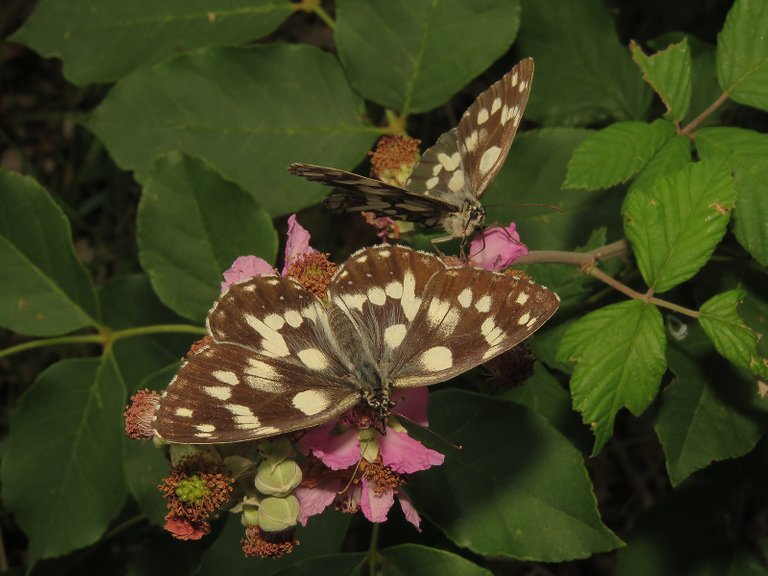
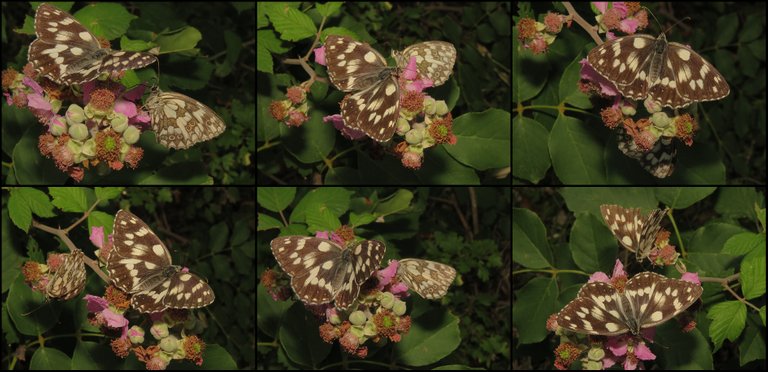
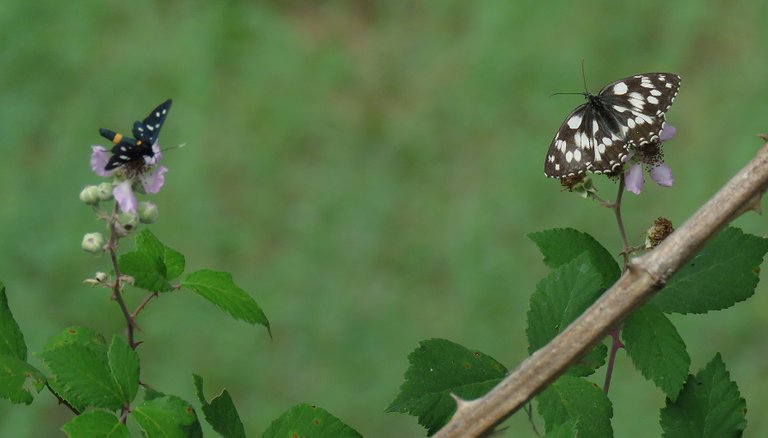
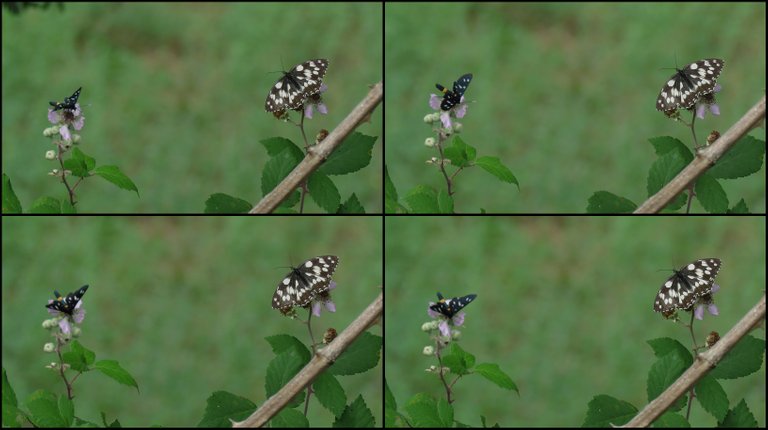




Yay! 🤗
Your content has been boosted with Ecency Points
Use Ecency daily to boost your growth on platform!
Support Ecency
Vote for new Proposal
Delegate HP and earn more, by @borjan.
Great shots. The shield bugs and spiders are very cool. The bugs at the begining gross me out a little lol but the photos are really good
It is amazing and beautiful how thousands of years of evolution made some of those masters of camouflage, while others are covered with colors that shout "Stay away from me or you will regret it!".
Great photos, thanks for bringing them online! 😃📸
Thanks. 🙂 Glad you like the post.
You always show very cool pictures here, I am always entertained by the pictures you show.
I loved "the beautiful iridescence of its exoskeleton" of the green beetle. The two Melanargia galathea butterflies was a very pretty shot. The Amata phegea moth is rather odd looking for a moth but I liked the coloring.
WoW! You took some amazing captures on the edge of the forest! What was this cockroach feeding on? The larva looks pretty beautiful. To think it changes into a sawfly.
I also love the black a white butterflies. I get to see them sometimes around here too if I'm, lucky. Most often just cabbage whites ;)
The right man in the right place, that's you.
You've attached some amazing photos here.
Have a wonderful weekend!
Thank you. 🙂Have a great day. And the weekend too.
It's great to see the main highlight of your photos tho😊 your photography skills are really amazing and you spend a lot of time in nature too👍👍but, i hope the insects haven't bite you perhaps you haven't told us you have become spiderman/antman now or no no not batman😓 this is bad very baaddd😆😆jokes✌✌😹😹just ignore this part✌🙏
These are nice creatures, I think you need to make some catalogue for this insect discovery you are doing, it so great and beautiful to have discovered new insects like this.
Exactly what I thought 😊.
You are really doing a great job @borjan 👍
Yeah, that's true tho you are right
Beautiful photographs you expose in this article. A great variety of insects presented in their natural habitat, without interference or alteration of their environment. you have done a good job!
Regards @borjan
Hermosas fotografías expones en este artículo. Una gran variedad de insectos presentados en su habitat natural, sin interferencia o alteración de su medio ambiente. ¡Has realizado un buen trabajo!
Saludos @borjan
Thank you. 🙂 Glad you like the post. Regards.
Very beautiful butterfly, I really like to see it, you take pictures like that I like
The green weevil indeed looks so cool.
Emerald bug😵
As always great pictures bro😊
Congratulations @borjan! You have completed the following achievement on the Hive blockchain and have been rewarded with new badge(s):
Your next target is to reach 280000 upvotes.
You can view your badges on your board and compare yourself to others in the Ranking
If you no longer want to receive notifications, reply to this comment with the word
STOPCheck out the last post from @hivebuzz: